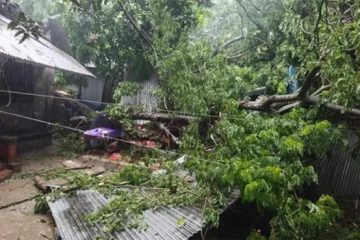 More than 21 million people have joined the group of the chronically hungry in Bangladesh due to the fallouts from the price hike and the global financial crisis, bringing the figure to a 40-year high, a UN report revealed.
More than 21 million people have joined the group of the chronically hungry in Bangladesh due to the fallouts from the price hike and the global financial crisis, bringing the figure to a 40-year high, a UN report revealed.
The poor, who have borne the brunt of the economic trouble, desperately need support requiring the government to spend more on food, health care and education to alleviate the crisis, the report said.
The report focussed on the impact of the economic crisis on women and children in eight
South Asian countries – Afghanistan, Bangladesh, Bhutan, India, the Maldives, Nepal, Pakistan and Sri Lanka.
“The poor people are facing double trouble as the price hike reduces their purchasing power and the global financial crisis cuts their employment opportunities,” Centre for Policy Dialogue (CPD) Executive Director Mustafizur Rahman told the FE.
The cumulative effects of the two factors – the price hike started in 2007 and the financial crisis in July of 2008 – have pushed a large number of people below the poverty line, he said.
The purchasing power problem is more acute in Bangladesh than in any other Asian country as the financial crisis has cost a less number of jobs, Mr Mustafiz explained.
The economist cautioned that as less people were going abroad for jobs, there will be a pressure on the domestic labour market.
“It is alarming that a less number of Bangladeshis are getting jobs in foreign countries due to the financial crisis,” he added.
The government should increase both domestic demand and employment opportunities to bring the people out of poverty, he suggested.
The UNICEF report said more than 65 million people were suffering from chronic hunger at the end of 2008. The number of hungry people was 44 million in 2006 and 20.3 million in 1970.
Fifty per cent of the total population earn below $1.25 per day and 45 per cent children are underweight, the report added.
In South Asia, over 405 million people suffered from chronic hunger in 2008, up from 300 million in 2006.
The governments in the region must urgently respond to the crisis.
The report feared that the poor in South Asia would sink further into poverty and malnutrition with long-term negative consequences for growth and development in the region and globally, the report said.
The poor spend more than a half of their income on food, which has become more expensive and made life even more difficult for them, it said.
Nearly a half of the region’s children are malnourished, the report added.
“This is the highest rate of malnutrition in the world, eclipsing even sub-Saharan Africa… there are more than twice as many underweight children in South Asia than in Africa,” the report revealed.




















